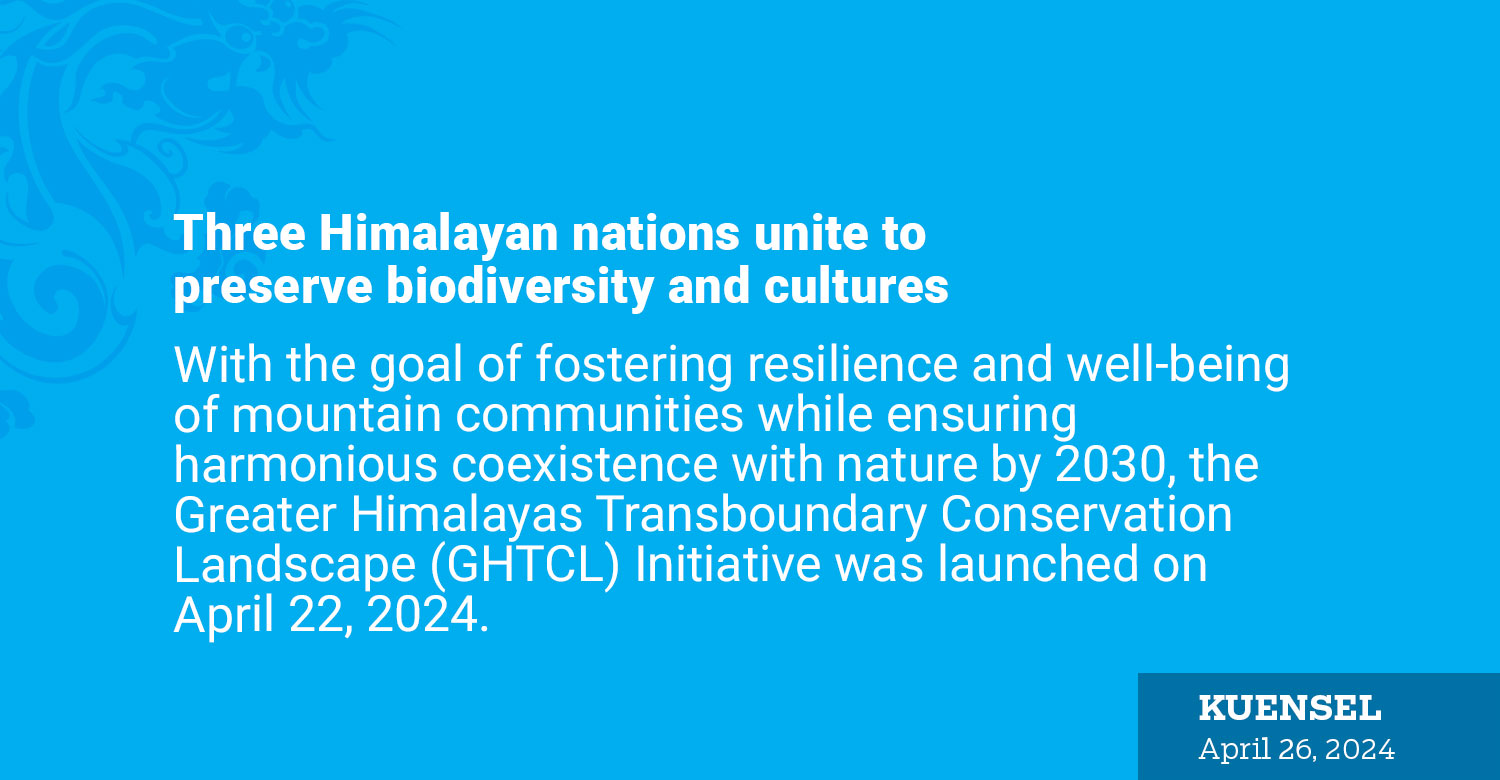Sherab Lhamo
With the goal of fostering resilience and well-being of mountain communities while ensuring harmonious coexistence with nature by 2030, the Greater Himalayas Transboundary Conservation Landscape (GHTCL) Initiative was launched on April 22, 2024.
The project is aimed at ensuring zero loss of natural habitat in the Eastern Himalayas, stabilise zero extinction of mountain flagship species, and move towards a zero carbon economy, once the project is through.
Prime Minister Tshering Tobgay said protecting and conserving biodiversity in the Himalayas was not possible by one country alone.
The initiative brings together three countries—Bhutan, India, and Nepal—with one goal through one project.
Shri Ravi Singh, CEO of WWF-India, emphasised the commitment to work together as professionals and friends to advance the initiative, while acknowledging the ecological and cultural richness of the region.
The Eastern Himalayan region, home to over a billion people, faces unprecedented risks from anthropogenic threats—human-made activities that cause harm to the ecosystem. The region boasts extraordinary biodiversity, including 10,000 plant species, 977 bird species, and globally threatened species such as Royal Bengal Tigers, One-horned Rhinoceroses, Snow Leopards, and Asian Elephants.
The region has been experiencing warming at a rate exceeding the global average, posing a substantial threat to its biodiversity and the vulnerable communities dependent upon it.
Dr Ghana S Gurung, country representative of WWF-Nepal, highlighted the impressive achievements in conservation delivery by the three countries but pointed out the challenges of maintaining these gains amidst development and population growth, and the crucial role of the Himalayas in climate change and water resources.
With a focus on transboundary species and incorporating One Health issues, the initiative (GHTCL) reinforces inclusive conservation principles, invests in Nature-Based Solutions, and respects the cultural and faith-based conservation traditions of mountain communities.
The official of WWF-Bhutan said Regional collaboration was seen as essential to maintaining an interconnected mosaic of conservation spaces across the Greater Himalaya and achieving zero extinction of key species.
The initiative aims to promote resilient mountain communities that embrace and promote biological and cultural diversity.
Country director of WWF-Bhutan, Chimmi Rinzin, said that out of a total estimate of more than 5,000 tigers in the world, more than 4,000 are found in these three range countries, which is around 74 percent of the total population.
The GHTCL initiative plans to explore joint funding mechanisms through projects, including promoting identification and management of community-based conservation models, supporting management action plans to protect and recover threatened species and habitats, and addressing urgent threats such as illegal wildlife trade, poaching, and climate change impacts on biodiversity.
To ensure successful implementation, the initiative will involve collaboration between WWF offices, national governments, community-based organisations, and financing institutions.
GHTCL initiative is led by WWF-Bhutan, WWF-India, and WWF-Nepal.


